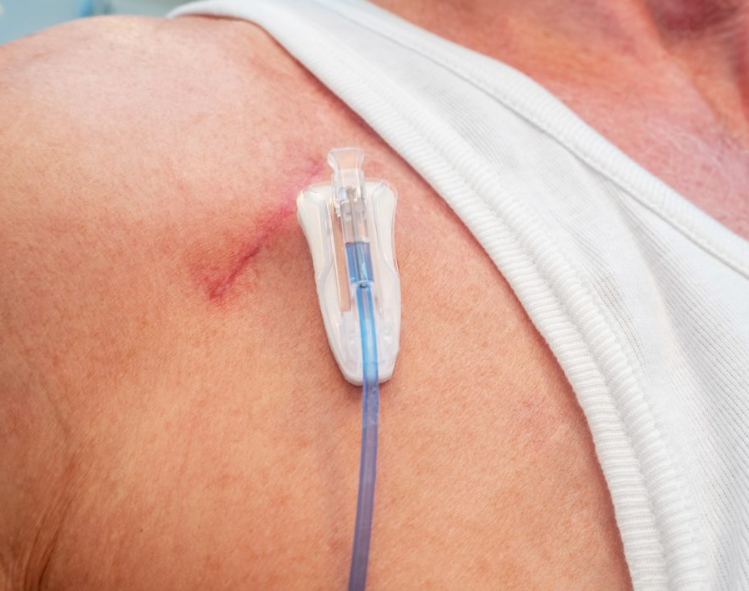Port a cath chemotherapy is a medical procedure used to facilitate the delivery of chemotherapy drugs in cancer patients. A port-a-cath is a small medical device that is implanted under the skin, typically in the chest area, providing easy access to a vein for the administration of treatment. This method is particularly beneficial for patients undergoing long-term chemotherapy, reducing the discomfort and risks associated with repeated needle insertions.
1. What is a Port a Cath?
A port-a-cath, also known as a port, is a small, durable device that is surgically placed under the skin, often near the collarbone, with a catheter leading into a large vein. The port allows healthcare providers to administer chemotherapy drugs and take blood samples without needing to insert a needle into the vein each time. This can significantly reduce the risk of vein irritation and the need for multiple needle insertions, making it a more comfortable option for patients.
2. Benefits of Port a Cath for Chemotherapy
The main advantage of using a port a cath for chemotherapy is convenience. Patients no longer need to endure repeated needle sticks during each treatment session. The port provides a reliable, long-term access point for the administration of chemotherapy drugs, as well as for drawing blood if needed.
Additionally, the use of a port can help avoid damage to veins, a common concern in chemotherapy patients, especially those receiving long-term treatments. With fewer interruptions to the veins, patients experience less pain and fewer complications over time.
3. The Process of Chemo Port Insertion
The procedure for chemo port insertion is typically done under local anaesthesia with sedation. A small incision is made to place the port under the skin, and the catheter is carefully guided into a vein, usually near the heart. The procedure usually takes about 30 minutes to an hour and is minimally invasive. After insertion, patients can typically resume their normal activities, though they may be advised to avoid heavy lifting or strenuous exercise for a short time.
4. Caring for a Port a Cath
After the procedure, proper care is essential to ensure that the port remains functioning and free from infection. Regular cleaning and dressing changes will be required, and patients will be monitored for signs of complications such as infection or clotting. A healthcare professional will provide guidance on how to care for the port and what signs to look for to ensure its proper functioning.
In conclusion, port a cath chemotherapy is an invaluable tool for patients undergoing chemotherapy, providing a more comfortable and convenient way to receive treatment. By reducing the need for repeated needle insertions and protecting veins from damage, the port can significantly enhance the quality of life for chemotherapy patients.


